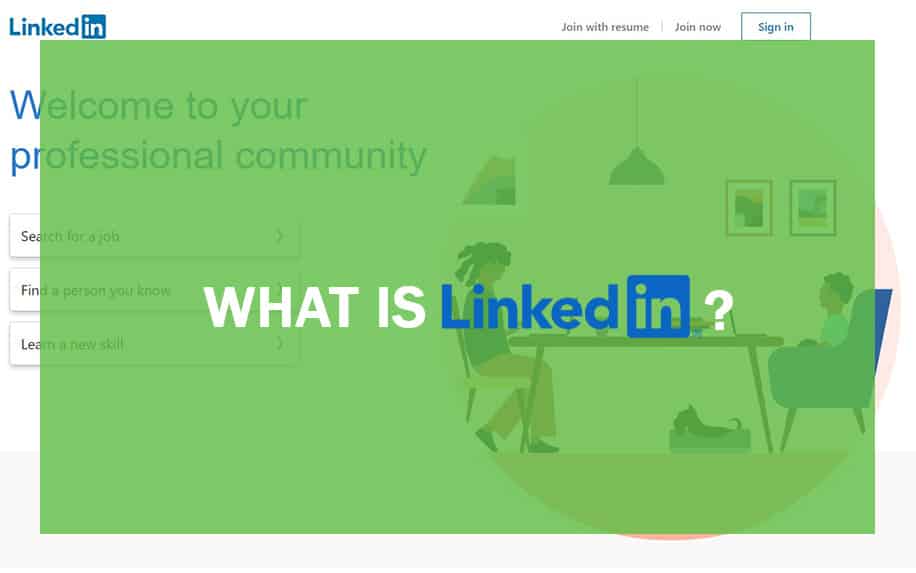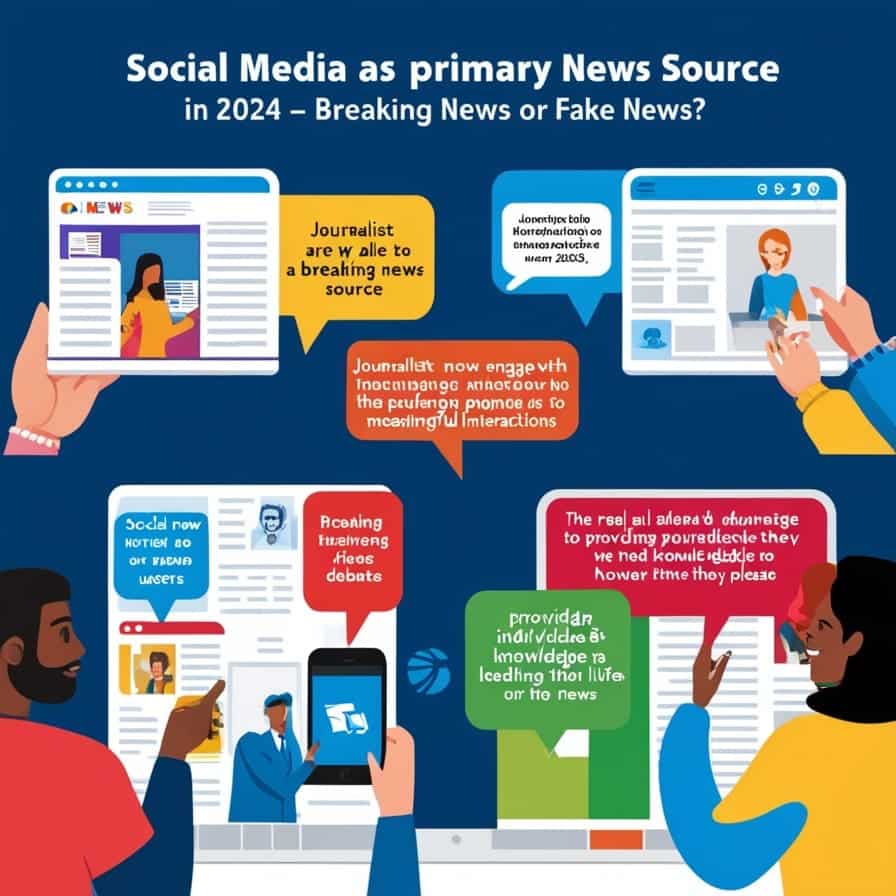Social Media As A Primary News Source in 2024 – Breaking News or Fake News?
The emergence of social media platforms has definitely changed the way we consume news. Even more, journalism has taken different shapes and forms, transforming into a faster pace and broader range. Throughout history, journalism has been pivotal in narrating truths to the public, and today, that’s the role of social media as a recent news source. Throughout history, journalism has been pivotal in narrating truths to the public, and today, that’s the role of social media as a recent news source.
Social media is the primary news source, so there’s room for fostering interactive dialogue among users and paving the way to meaningful interactions. Besides, journalists are now able to engage with the audience as well, expressing themselves freely through online debates. The real advantage of social media as a news source is in providing individuals with the knowledge they need to lead their lives however they please.
Yet, the influence of social media on traditional TV news consumption remains unclear. While viewing figures among younger demographics have been declining consistently, it is essential to note that live TV still dominates a significant portion of daily video consumption. Let’s take a profound look at the impact of social media on journalism today.
In the ever-evolving landscape of journalism, it is vital to recognise the impact of digital media on newspapers. While online journalism has not entirely replaced traditional newspapers, it is undeniable that their readership and revenue have seen a significant decrease. People now return to social media as a primary news source.
This shift has prompted many newspapers to adapt to the changing market by transitioning to digital platforms, while others have unfortunately been forced to cease operations entirely. However, upon closer examination, it becomes clear that newspapers still maintain a dominant presence in the information world due to their unique purpose.
One key reason newspapers remain relevant is their ability to provide reliable information in this digital age. Despite the widespread reliance on social media as a news source, newspapers have remained steadfast in offering credible and trustworthy reporting. The growth of social media popularity has brought numerous benefits.
Reading, in general, is one of the many aspects of our lives that have been digitised. Many of the younger generations never knew a world where technology wasn’t the main focus of everything. Books, magazines, and newspapers were filling every street corner, and bookstores held an undeniable significance.
People aren’t mainly complaining about the increased popularity of social media as a news source. In fact, this has proven to have significant advantages that traditional journalism never seemed to offer.
When breaking news made huge headlines on TV, many people were more likely to miss it. However, social media contributed to spreading the breaking news, not to almost everyone but as instantly as it was happening. This accelerated news cycle ensures that readers stay informed in real time, allowing them to stay up to date with the latest developments.
One remarkable benefit of social media platforms serving as the primary source of news is their ability to expose individuals to diverse narratives and perspectives. The internet has given people freedom of speech, which could actually be a double-edged sword. However, it still helps in offering various narratives and different sides of the same story, unlike newspapers that only disseminate the news objectively.
- Most of the world population relies on social media as their main news source, with 48% in America, 69% in Chile, and 72% in Malaysia and the Philippines.
- The highest percentage that rely on social media for news is in Kenya and South Africa, reaching 76% and 75%, respectively.
- A recent survey conducted on the usage of social media as a news platform found that the users in Nigeria amounted to 78%, while those in Japan were only 23%.
- Europe remains the continent with the most minor percentage of users using social media as a news source, scoring 40%.
- New findings claimed that Facebook was among the most used platforms for getting news, with 61% of users, yet only 11% of adult users on Instagram use it for news.
- Twitter scores the highest as the social media platform used as a news source, with 74% of active accounts.
The Role of Algorithms in Shaping News Consumption
Using social media to learn about the latest news and trends is a great way to make sure you don’t miss anything. Well, this is only partially true, given how algorithms work in distributing the news and targeting their audience carefully. The rise of artificial intelligence has allowed machine learning to become dominant, giving computers the ability to control what you read.
In other words, people who mindlessly scroll through social media and click on links or websites shared by social networks will get trapped in an echo chamber. The echo chamber is a bubble filter that prevents you from being exposed to different narratives. It only offers you the perspectives they believe you are interested in.
Publishers have keenly observed this trick, and accordingly, they have made adjustments to their infrastructure. They have developed intricate algorithms that tailor the user’s site experience based on their entry point. The problem with this is that it can give rise to insular echo chambers, heightened polarisation of ideas, and, in the most grave instances, the widespread dissemination of fabricated news.
The revolution of the digital world is nothing short of fascinating. However, with all its great benefits comes even greater challenges. The abundance of social media platforms partially contributes to adding layers to the concerns of internet users. For example, the same breaking news can have different angles and details on every platform, making it hard to figure out which one tells the truth. Yet, this is, unfortunately, not the only obstacle that journalists face.
In today’s era, where the media landscape is riddled with false narratives and misleading content, there has never been a more crucial time to embrace accurate reporting. Its significance cannot be emphasised enough. It’s one thing to get breaking news instantly as it unfolds, but it’s another to trust the credibility of the information. That’s one thing that social media may not be able to offer as a news source, at least for the time being.
The Rise of Echo Chambers
We’ve already stated that various news narratives on social media are a great benefit that helps you form an unbiased opinion. Well, here’s one problem: echo chamber. It’s a filter bubble that keeps feeding you with a specific viewpoint, limiting your exposure to other perspectives. The danger here lies in being exposed to only misleading information on repeat.
Lack of Fact-Checking Mechanism
Social media platforms don’t offer a mechanism where you can check the accuracy of information. Sadly, many users rely on the data and news shared across these platforms, ending up sharing, liking, or commenting, which are well-known ways to increase the visibility of the posts on newsfeeds. This is one challenge that you can barely encounter in traditional newspapers that aren’t allowed to share news or info without guaranteeing its precision.
The rapid spread of fake news across social media platforms has become a pressing issue. This problem affects individuals and impacts the entire society. Every part of a community, including citizens, government bodies, businesses, and organisations, is concerned about the proliferation of false information online.
Internet users can become trapped in echo chambers, which can be intimidating. The danger lies in the possibility of being exposed to only fake news. Consequently, seeds of doubt will be sown, and people will no longer be able to differentiate between lies and truth.
Ergo, the responsibility for stopping the circulation of false news across social media platforms lies with different parties. For starters, social media companies like Facebook and Instagram should take a leading role in tackling fake news and monitoring activities across the platforms, given the gravity of this situation. Critics do believe that the solution starts here since they created the possibility of false news spreading like wildfire in the first place.
On the other hand, social media users should be relentless in this battle against misinformation. As avid users, it’s imperative that we cultivate a critical lens when consuming news online and fact-check before sharing or liking it. By adopting these practices, we can ensure the safeguarding of the integrity of information on social media and collectively combat evilness.
Undeniably, social media has been quite beneficial as a primary news source. It undoubtedly has given online journalism a new shape and profoundly impacted the newspaper industry. The rise of digital media has brought about significant transformations, empowering news organisations to deliver news with unprecedented speed and efficiency, but they come with their own set of challenges. By adopting robust measures to battle the spread of fake news, digital media can thrive in an ever-evolving media landscape.








